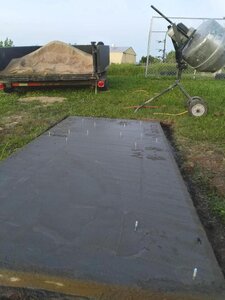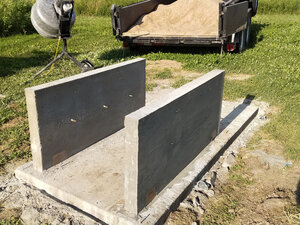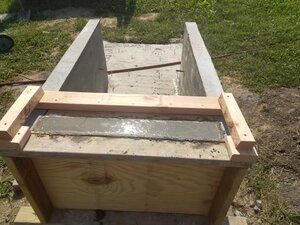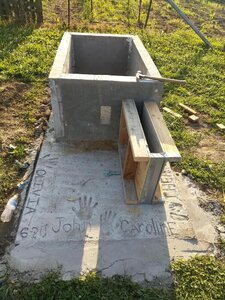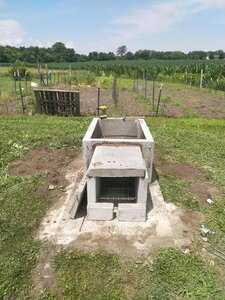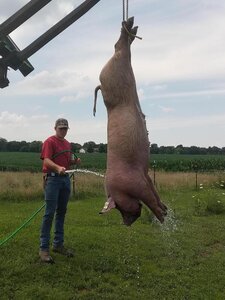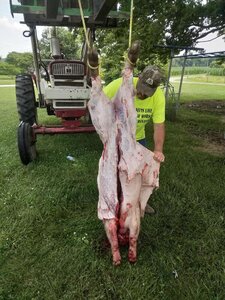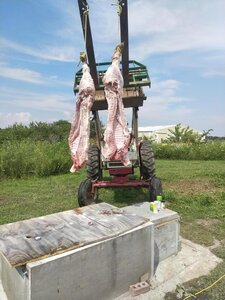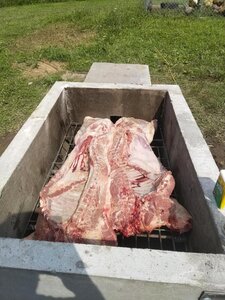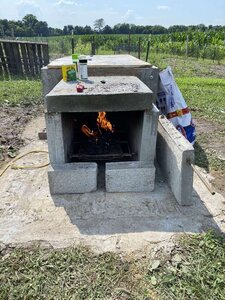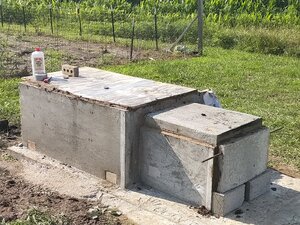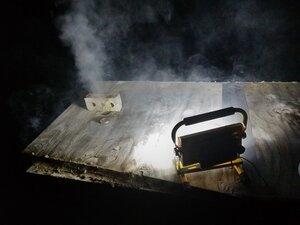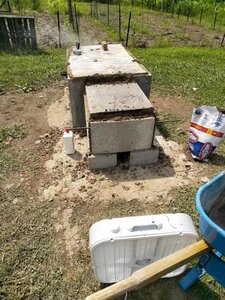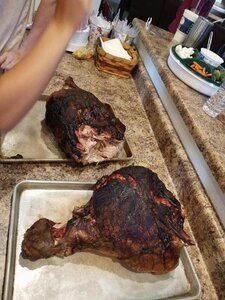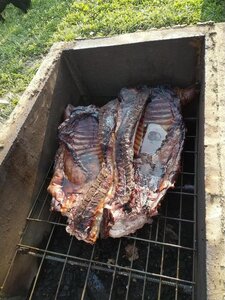I've lurked here for a while but finally decided to sign up to share my one-of-a-kind homemade pit smoker. My kids raise a few hogs each year to show at the county fair. We always get an extra pig or two in case one gets sick, dies, or doesn't put on weight fast enough to show at the fair. We always end up with more pork than we need at the end of the summer, so this year I decided I was going to do a whole hog roast with one of the extra pigs for the 4th of July. The big challenge going in was that the pig was going to be somewhere in the neighborhood of 220 to 240 pounds. I was definitely going to need a specialty smoker to handle the job.
I started this project back in early May by researching how to do a whole pig roast. There are lots of examples online of cinder block pit smokers for whole hog roasts. The general idea is that you build a box out of the concrete blocks. Charcoal goes onto the floor of the box. The pig gets suspended on a grate half way up the box, and you cover the box with plywood or tin. This seems to be the go-to method for whole hog roasts.
The problem I saw was that all of the examples I saw online were smaller pigs, typically 100 pounds or less. My concern was that with direct heat in the box with the pig, I'd get the thinner sections of the pig cooking and getting done way before the thicker hams. I decided I needed to design and build a specialty smoker with indirect heat to handle the larger pig.
EDIT: Apparently my post and photos were too long and broke the forum, so I'll add them as replies to this OP.
I started this project back in early May by researching how to do a whole pig roast. There are lots of examples online of cinder block pit smokers for whole hog roasts. The general idea is that you build a box out of the concrete blocks. Charcoal goes onto the floor of the box. The pig gets suspended on a grate half way up the box, and you cover the box with plywood or tin. This seems to be the go-to method for whole hog roasts.
The problem I saw was that all of the examples I saw online were smaller pigs, typically 100 pounds or less. My concern was that with direct heat in the box with the pig, I'd get the thinner sections of the pig cooking and getting done way before the thicker hams. I decided I needed to design and build a specialty smoker with indirect heat to handle the larger pig.
EDIT: Apparently my post and photos were too long and broke the forum, so I'll add them as replies to this OP.


